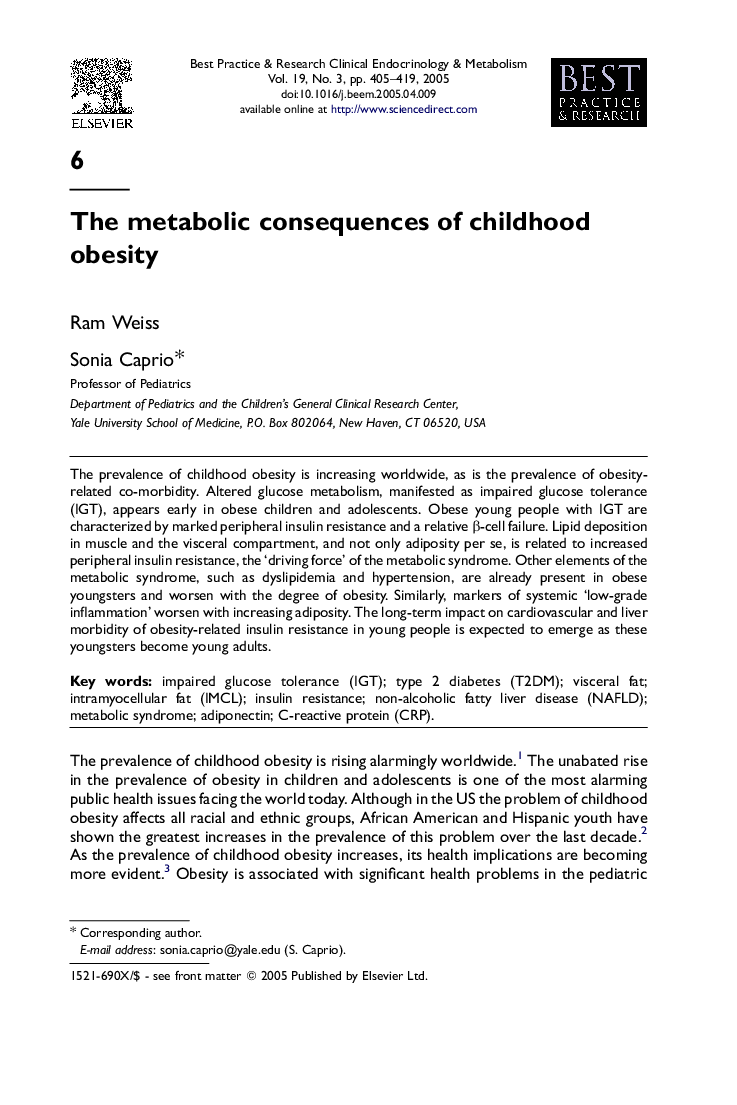| Article ID | Journal | Published Year | Pages | File Type |
|---|---|---|---|---|
| 9110332 | Best Practice & Research Clinical Endocrinology & Metabolism | 2005 | 15 Pages |
Abstract
The prevalence of childhood obesity is increasing worldwide, as is the prevalence of obesity-related co-morbidity. Altered glucose metabolism, manifested as impaired glucose tolerance (IGT), appears early in obese children and adolescents. Obese young people with IGT are characterized by marked peripheral insulin resistance and a relative β-cell failure. Lipid deposition in muscle and the visceral compartment, and not only adiposity per se, is related to increased peripheral insulin resistance, the 'driving force' of the metabolic syndrome. Other elements of the metabolic syndrome, such as dyslipidemia and hypertension, are already present in obese youngsters and worsen with the degree of obesity. Similarly, markers of systemic 'low-grade inflammation' worsen with increasing adiposity. The long-term impact on cardiovascular and liver morbidity of obesity-related insulin resistance in young people is expected to emerge as these youngsters become young adults.
Keywords
Related Topics
Life Sciences
Biochemistry, Genetics and Molecular Biology
Endocrinology
Authors
Ram Weiss, Sonia (Professor of Pediatrics),
